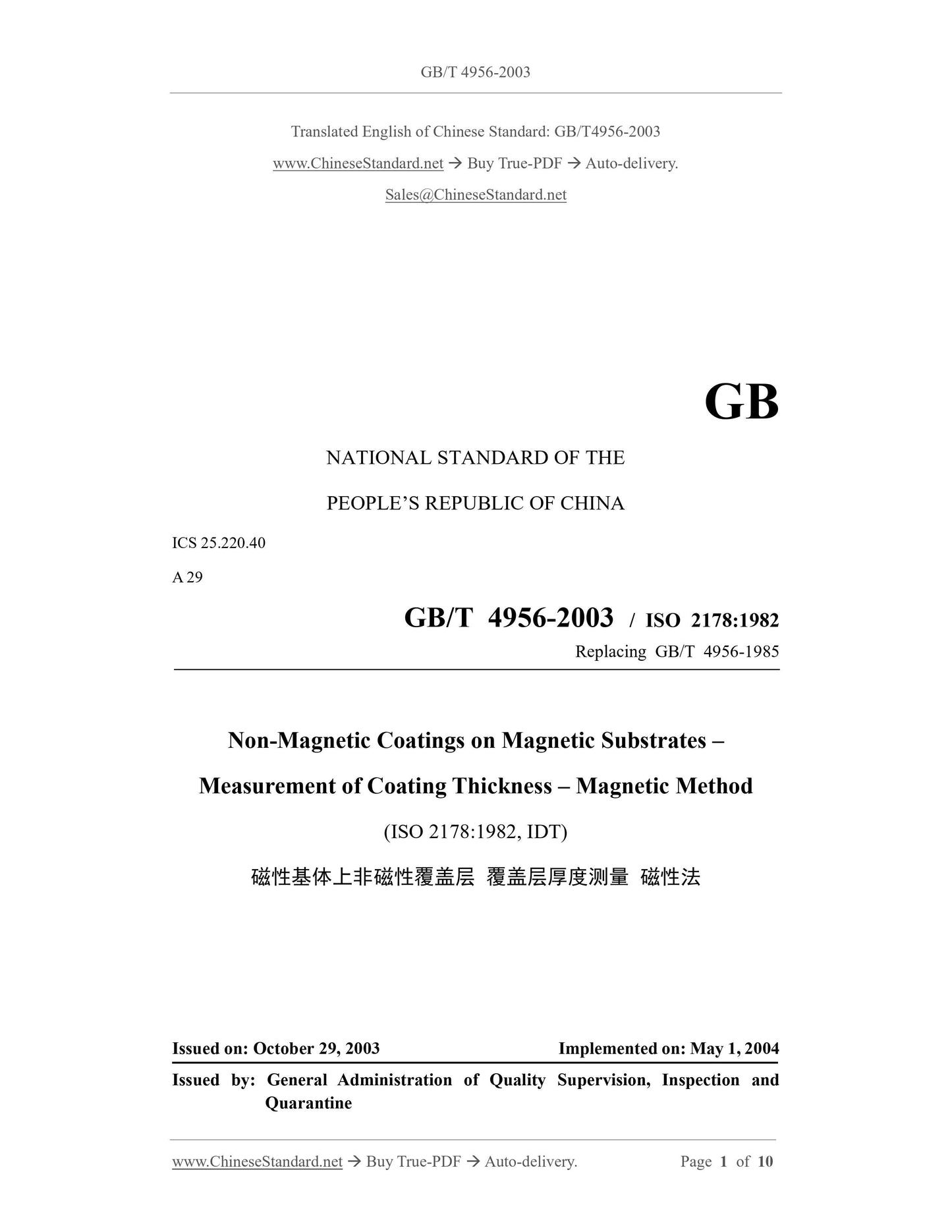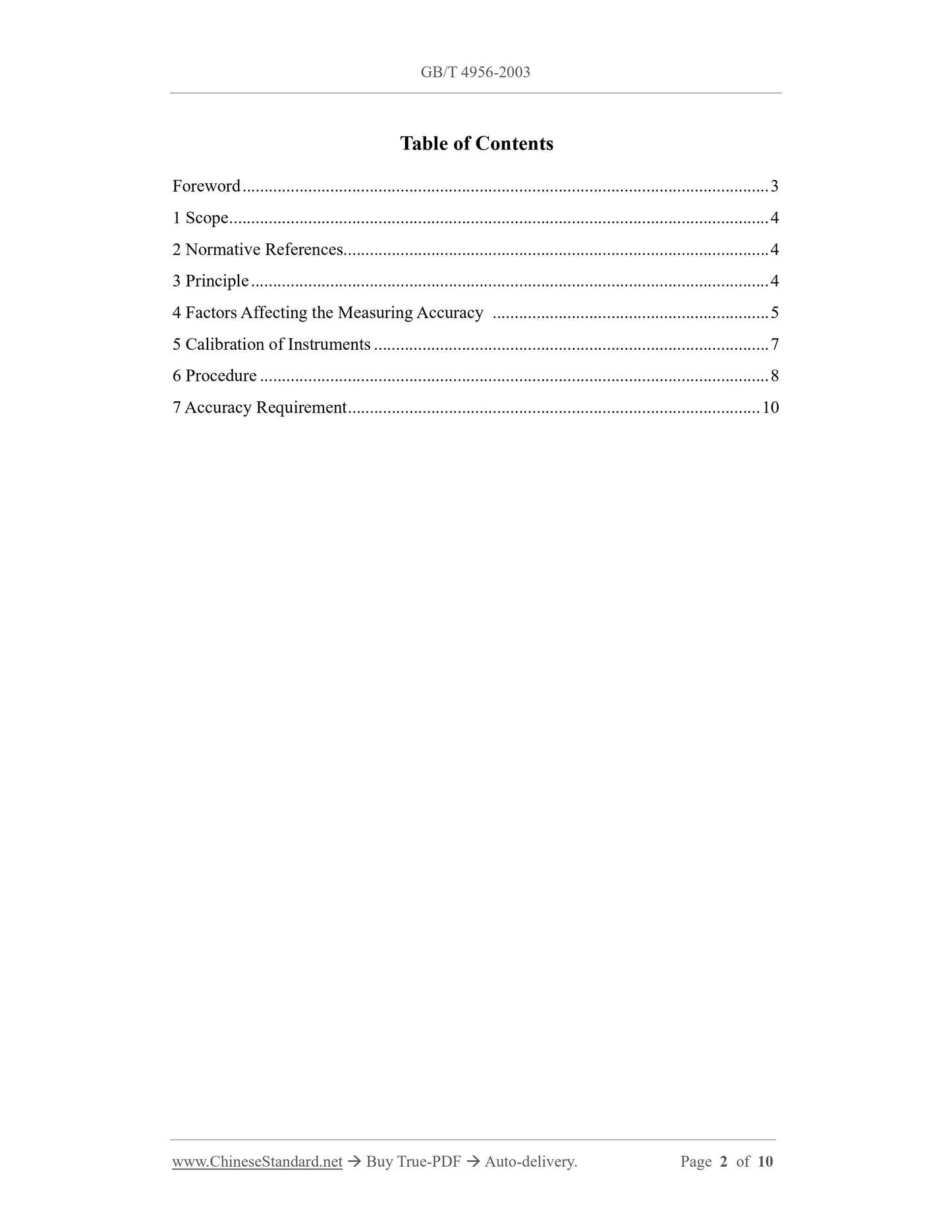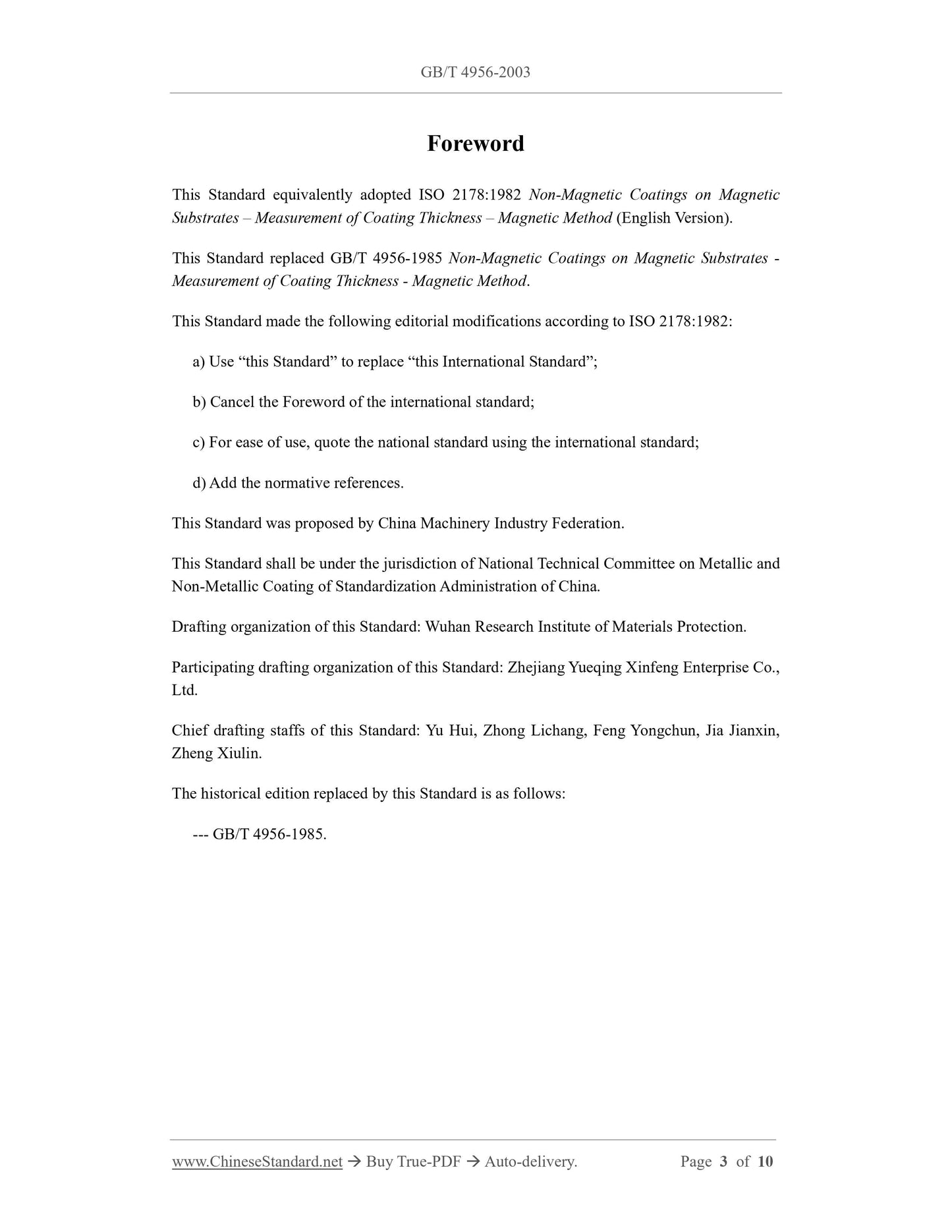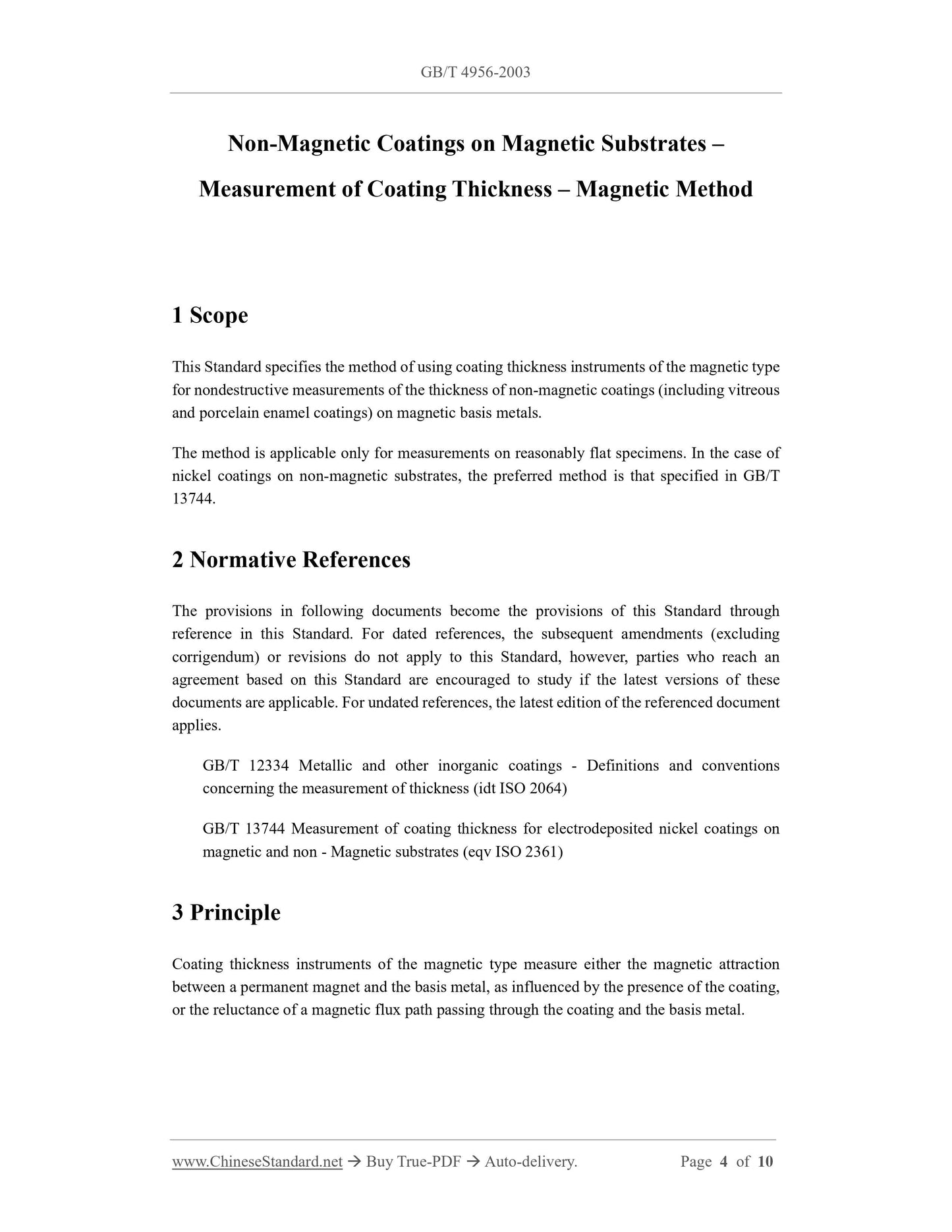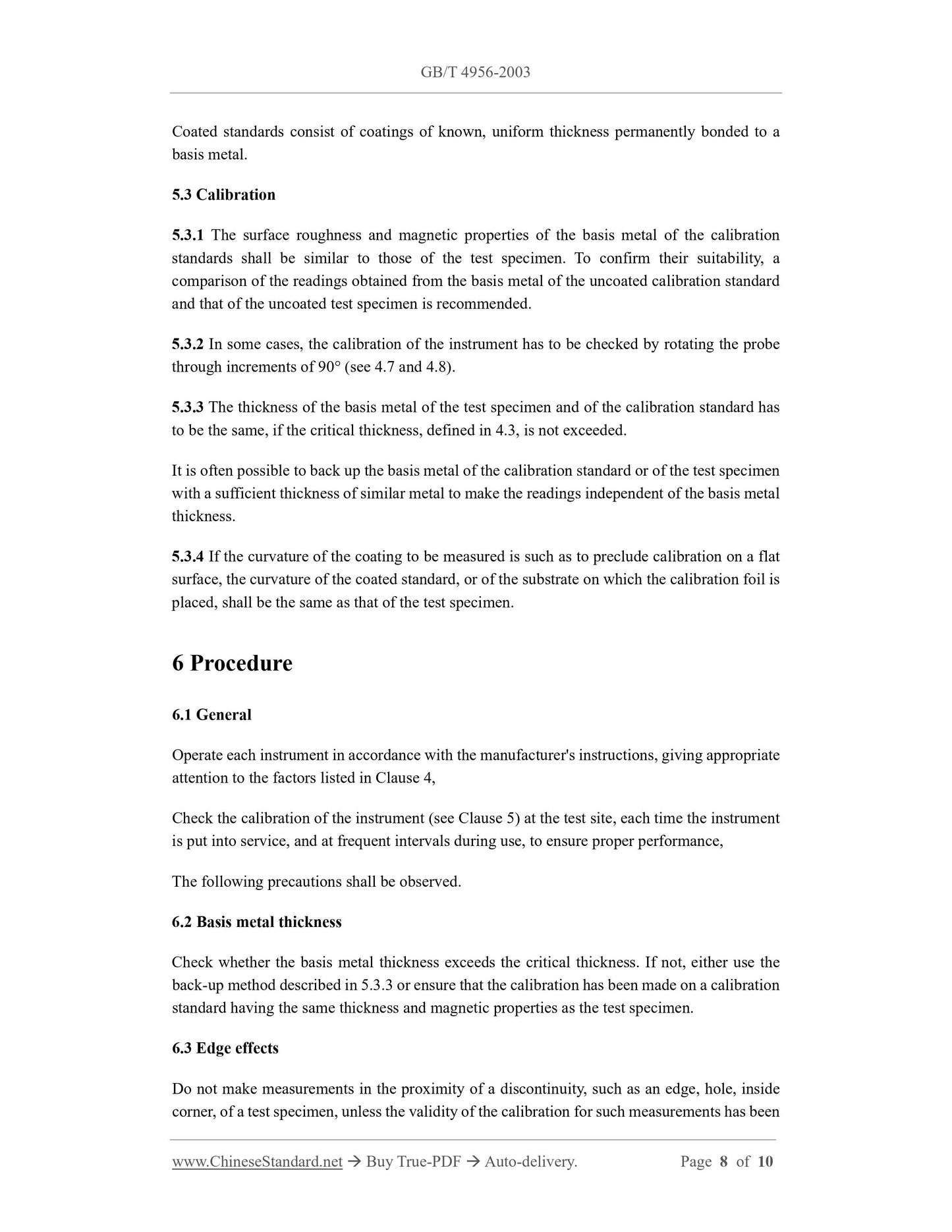1
/
of
5
www.ChineseStandard.us -- Field Test Asia Pte. Ltd.
GB/T 4956-2003 English PDF (GB/T4956-2003)
GB/T 4956-2003 English PDF (GB/T4956-2003)
Regular price
$90.00
Regular price
Sale price
$90.00
Unit price
/
per
Shipping calculated at checkout.
Couldn't load pickup availability
GB/T 4956-2003: Non-magnetic coatings on magnetic substrates -- Measurement of coating thickness -- Magnetic method
Delivery: 9 seconds. Download (and Email) true-PDF + Invoice.Get Quotation: Click GB/T 4956-2003 (Self-service in 1-minute)
Newer / historical versions: GB/T 4956-2003
Preview True-PDF
Scope
This Standard specifies the method of using coating thickness instruments of the magnetic typefor nondestructive measurements of the thickness of non-magnetic coatings (including vitreous
and porcelain enamel coatings) on magnetic basis metals.
The method is applicable only for measurements on reasonably flat specimens. In the case of
nickel coatings on non-magnetic substrates, the preferred method is that specified in GB/T
13744.
Basic Data
| Standard ID | GB/T 4956-2003 (GB/T4956-2003) |
| Description (Translated English) | Non-magnetic coatings on magnetic substrates-Measurement of coating thickness-Magnetic method |
| Sector / Industry | National Standard (Recommended) |
| Classification of Chinese Standard | A29 |
| Classification of International Standard | 25.220.40 |
| Word Count Estimation | 5,540 |
| Date of Issue | 2003-10-29 |
| Date of Implementation | 2004-05-01 |
| Older Standard (superseded by this standard) | GB/T 4956-1985 |
| Quoted Standard | GB/T 12334; GB/T 13744 |
| Adopted Standard | ISO 2178-1982, IDT |
| Regulation (derived from) | China Announcement of Newly Approved National Standards No. 14 of 2003 (No. 62 overall) |
| Issuing agency(ies) | General Administration of Quality Supervision, Inspection and Quarantine of the People Republic of China |
| Summary | This standard specifies the use of non-destructive magnetic gauge to measure AIDS substrate metal non-magnetic coatings (including ceramic and porcelain grab layer) thickness method. This method applies only to the appropriate level of the sample is also measured on a non- magnetic body of zinc on his cap thickness measurement precedence GB/T 13744 method specified. |
Share
